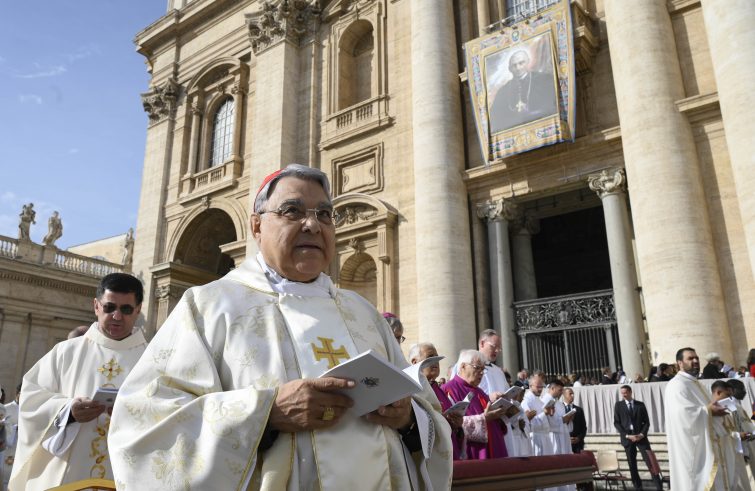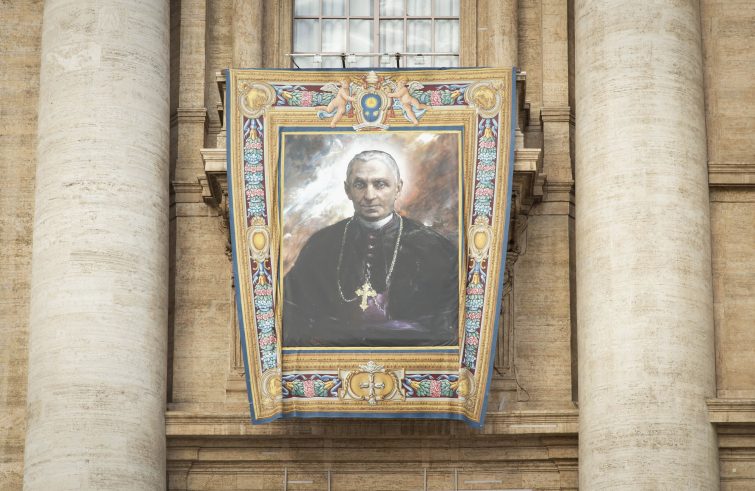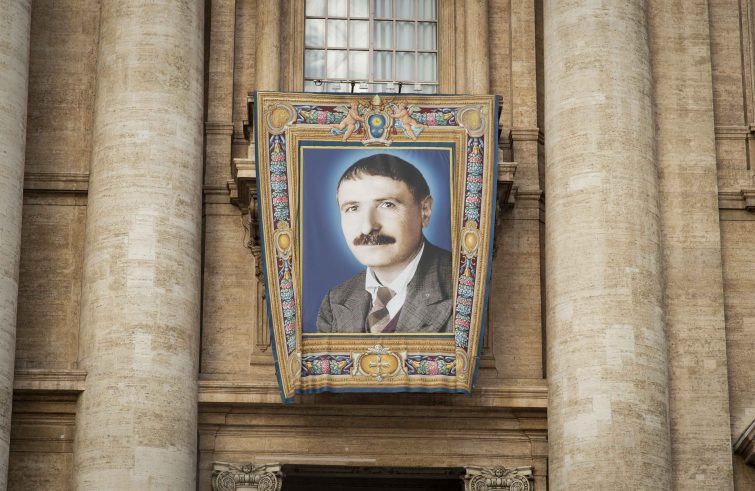
“Saints are prophecies of a reconciled person: reconciled with God, with themselves, with their brothers and sisters, and also with nature.” Card. Marcello Semeraro, Prefect of the Dicastery for the Causes of Saints, concluded the conference titled “Holiness today” at the Augustinian Patristic Institute a few days ago and concelebrated the canonisation of Blessed Giovanni Battista Scalabrini and Blessed Artemide Zatti in St. Peter’s Square.
Your Eminence, speaking of holiness in 2022 may sound to some as a way of stepping back into the past. Who are the modern-day saints?
A ”saint” is a man who is ”fulfilled”, a man who fulfils God’s plan for him within himself. For the Lord each person – as St. John Paul II wrote – “is always unique and unrepeatable”, and thus ”someone called and given a special name.” From this perspective, a saint is never someone from the past, but from the future, because he or she is the signpost of fulfilment. Benedict once called saints “the signposts that God has communicated to us.”
Europe is distraught by a war that is reaching a global scale. Is there room for holiness at this time and in these contexts?
Saints are prophecies of a reconciled person: reconciled with God, with themselves, with their brothers and sisters, and also with nature. Suffice it to mention saints like Francis of Assisi and Francis of Paola. In his homily for the canonisation rite on Sunday 9 October, the Pope said: “Let us not forget the beleaguered Ukrainian emigrants. With great vision, Scalabrini looked forward to a world and a Church without barriers, where no one was a foreigner.” These words are true for numerous present-day saints and blesseds. During my present ministry, the Pope has entrusted me to preside over several beatification rites.
Most of them are martyrs: by responding to violence with mildness, they evoked peace.
I am thinking of Blessed Rosario Livatino. Moments before his death after being shot he said to his killers: “But what have I done to you?” On his lips resounded God’s lament: “My people, what have I done to you?”. One of his successors eventually repented. He said: “Today I would rather be killed than do again what I have done to him! And I pray to him every Sunday at Mass!”
- (Foto Siciliani-Gennari/SIR)
- (Foto Siciliani-Gennari/SIR)
How are the virtues required for “canonisable holiness” determined?
The underlying factor is the intuition of the People of God which, sustained by the Spirit, recognises the reflection of Christ’s holiness in a baptised person. On October 6, referring to the magisterium of Vatican II as he addressed the Dicastery for the Causes of Saints and the participants in the conference of the previous days, Francis said that the People of God, has always had a particular “nose” for recognizing these models of holiness, extraordinary witnesses of the Gospel. It is therefore necessary to take into due consideration the consensus of the people around these Christianly exemplary figures.”
A process of investigation, providing testimonies and examining eventual writings takes shape on this basis, which, if successfully concluded, is submitted to the Pope for final discernment.
Sainthood is a universal vocation. However, what does it take to be a saint?
I would like to answer with the words of a modern-day saint, St J. H. Newman. In his writings of September 27, 1856, titled “A Short Road to Perfection”, he writes:
“If we wish to be perfect, we have nothing more to do than to perform the ordinary duties of the day well… He, then, is perfect who does the work of the day perfectly, and we need not go beyond this to seek for perfection.”
The “reputation for holiness” does not correspond to notoriety. At a time marked by the use of digital and social media, is there a risk that consensus may overshadow the fundamental steps involved in initiating a beatification and canonisation cause?
The opportunities and risks inherent in the use of digital and social media do not apply only to the reputation for holiness. While the age-old axiom vox populi, vox Dei has its theoretical coherence, it does not hold up to the test of history, including recent events.
Men and women acclaimed with great clamour and for a long time were not only a failure, but also causes of tragedy.
In the aforementioned speech, Francis warned that “in the use of digital media, especially social networks, there can be a risk of forcing and mystification dictated by less than noble interests. What is needed, therefore, is wise and discerning discernment.” It is also for this reason that the practice of the Church today is to wait some time to see whether the so-called “reputation for holiness” is genuine. It can be defined as such when, on the one hand, it withstands the passing of time and trends and, on the other hand, it brings about spiritual benefits for all.
What is the everlasting actuality of the saints?
In his third Canticle, Dante Alighieri has St Bernard utter a well-known triplet: “Look now on the face that most resembles Christ/ for only its clarity / can
dispose you to look on Christ.” (Paradise, 32; 85-87). The crucified and risen Christ is the Lord of history, glorified by the Church yesterday, today and forever! Thus the everlasting actuality of the saints is found in the reflection of a sparkle of Christ’s paschal light in their own lives.












